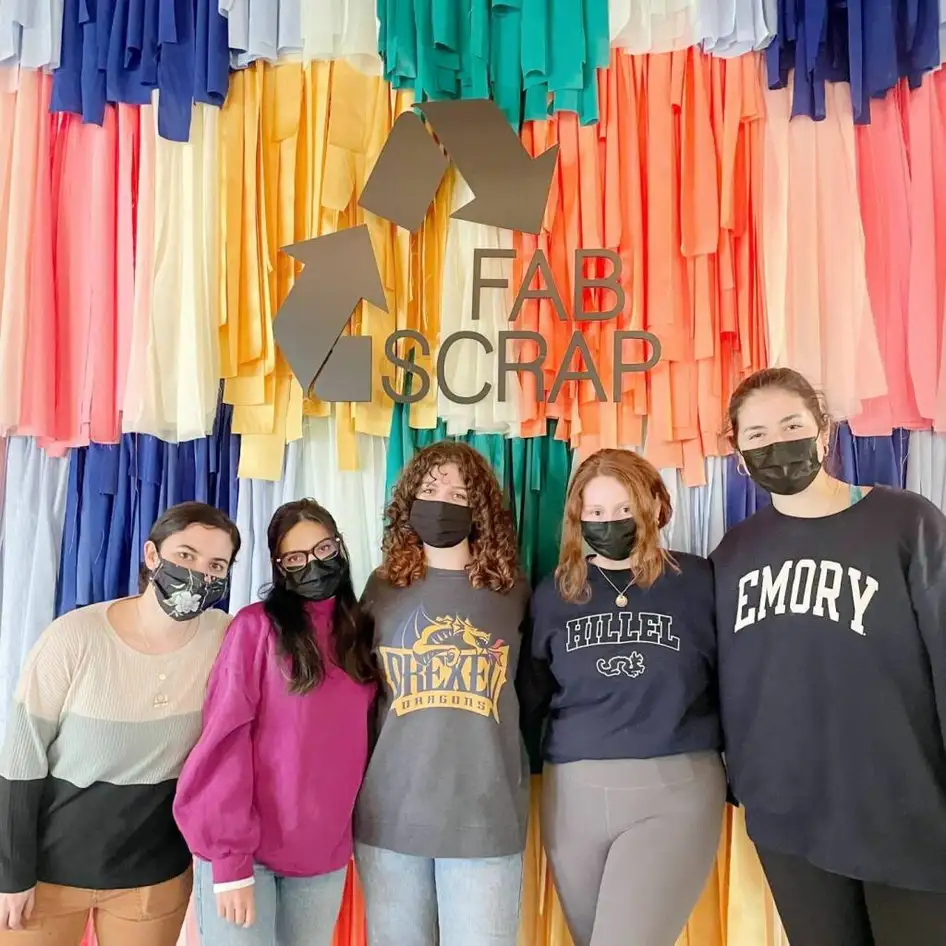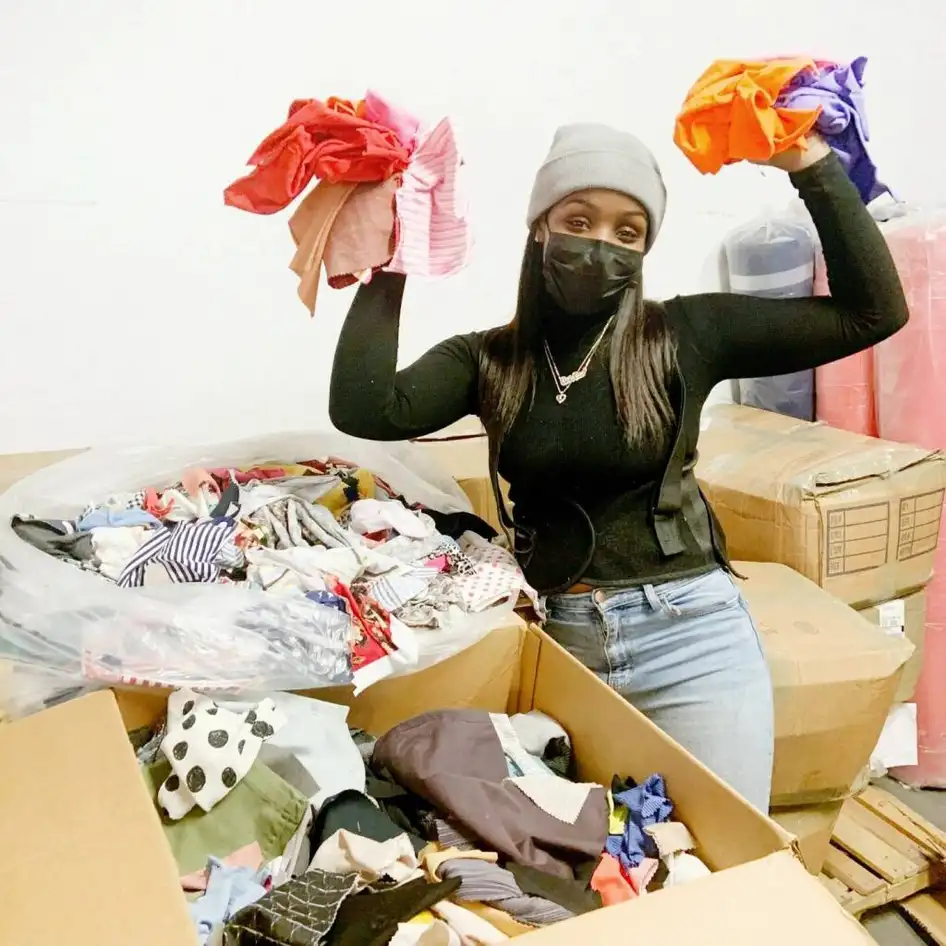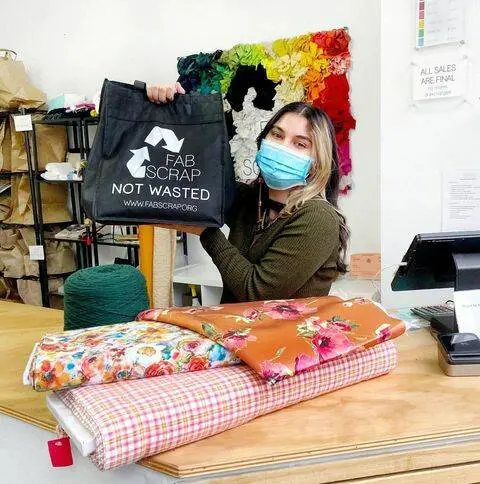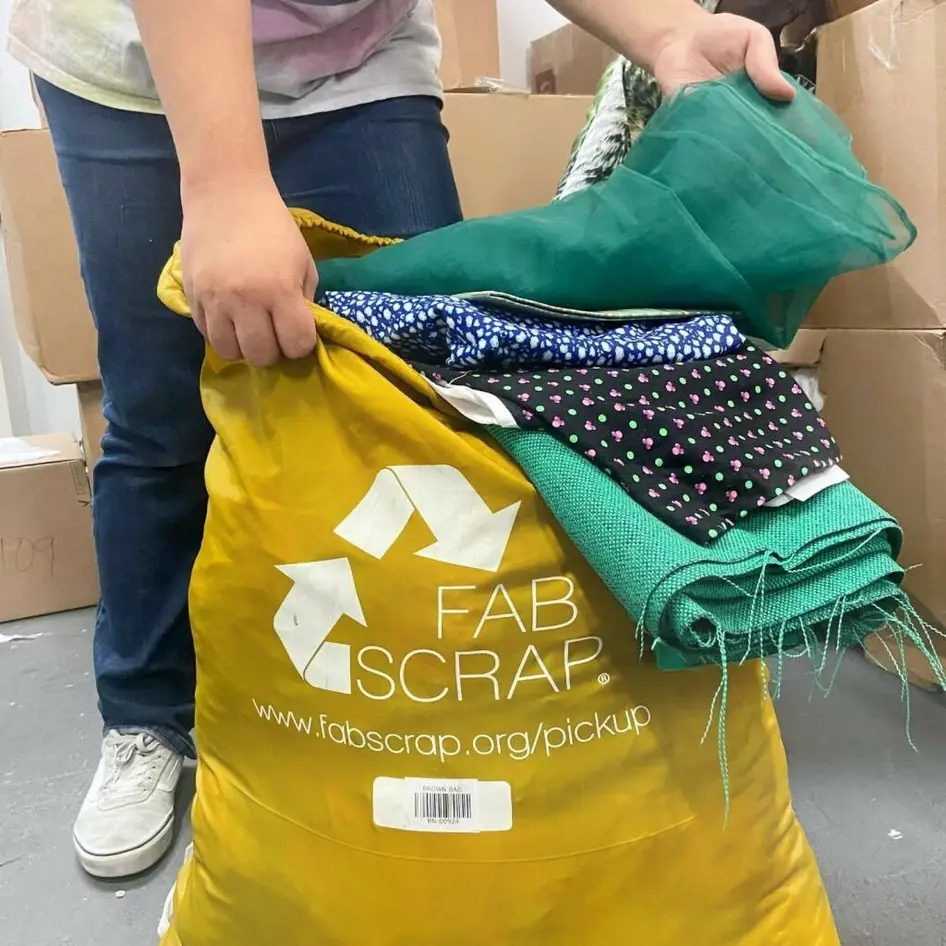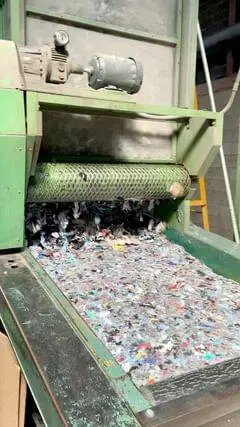We collected 303,711 lbs of material in 2021 and have collected 974,624.00 lbs in total in the 5 years FABSCRAP has been operating.
Like all small businesses, COVID has definitely had a large effect on FABSCRAP in the last 2 years. We had to close all operations from March-July 2020 and because a lot of our business is public facing with volunteers and shoppers, our reopening that July saw a lot of changes to how we operate daily and how many people we could welcome into our space safely. A slow down both in service pickups of materials and shoppers/volunteers in 2020 affected our revenue and that is still being felt, even as some of our daily operations return to a new normal.
FABSCRAP is excited about our recent expansion to Philadelphia, we are planning on getting more involved with our new community of designers and fiber artists, as well as branching out into Baltimore, D.C. and New Jersey’s textile communities. Both our New York and Philadelphia locations host events that educate our community about textile waste and teach creative reuse skills. We hope to be able to host pop-up events again this year to connect with communities outside our two locations and make our saved from landfill materials accessible to as many people as we can reach.
Every 3 months, FABSCRAP highlights an artist or designer who utilizes textile waste in their work, and who serves as an example within their community of not only sourcing more sustainably, but also how to manipulate textile waste into something new and beautiful using their specific talent and skill set. With our Philadelphia expansion, we now highlight two local designers each season, one from NYC and one from Philly. FABSCRAP sells their work in-store at our warehouses and online. We have featured a few fashion designers but many have been textile artists or crafters. We are currently featuring Grant Blvd in Philadelphia, a Black woman-owned sustainable fashion brand, and Karyn Lao in Brooklyn, who creates adorable pom-poms and jewelry. We do not produce clothing at FABSCRAP but work with a vast array of small businesses, brands and designers who source FABSCRAP fabric for their designs and products.
FABSCRAP does not produce clothing, instead we make the usable materials we collect to a community of designers, students, and home sewers for use in their work and clothing. There are definitely unique challenges to creating using saved from landfill/recycled materials but we have seen it inspire such creativity! Designers really have to let the fabrics available to them inspire their work instead of sourcing exact colors and patterns to match a planned vision. We also sell “Menables” in our Brooklyn and Philadelphia Reuse Rooms. These are essentially sample garments that have never been worn but need some sewing and creativity. Many are missing buttons, zippers, have cut seams or a fabric swatch cut from them but we have seen amazing results from reworking these pieces.
To expand to more cities and be known and trusted as a textile recycling and reuse materials resource on a large scale. We hope to have a west coast presence in the near future and want to be an accessible resource to as many companies and individuals as we can. In this expansion and growth we will continue our education goals as well, using the data we collect and insight we have from our operations to teach the industry and individuals about the textile waste problem and solutions to fix it
We think seeing the issue first hand really hits home with most people and makes such a large, wide ranging issue come to life. At both FABSCRAP warehouses we have what we call “The Pile” which is our massive collection of black garbage bags filled with unsorted textile waste. Customers and volunteers are always shocked when they can see how much waste is produced from the fashion industry and what we have at FABSCRAP is only a percentage of the total waste created across the country and worldwide. Customers are also shocked by the sheer amount of beautiful fabric we have in our Reuse Rooms and can’t believe that it
was once considered waste and would all have gone to the landfill. Volunteering helps the public understand the tedious process involved with sorting out fabric for recycling and the education around different fibers and which fabrics can and cannot be recycled, such as anything containing spandex. There has definitely been a shift in increased awareness from consumers who want to know what happens to their clothing and where/how their products were made- we hope to offer additional insight into a part of the problem they may never see otherwise.
All FABSCRAP fabric, leathers, trim and yarn is saved from the landfill and is similar to shopping secondhand for clothing- you lower the demand for new production of materials which is often very labor and resource intensive and keep these fabrics (in great condition!) from ending up thrown out or destroyed. Every 10 pounds of fabric bought from FABSCRAP has the same CO2-reducing benefits as planting a tree. Our Reuse Rooms are ever changing in what we have in-stock and there is always something new!
We want our materials to be as accessible as possible. We hope that more and more designers begin using sustainable fabrics and second-hand materials in their fashions. We do not want the price-point to stop our customers from buying reused and want to motivate creativity. We also strive to give away as much fabric as we sell-each location has a free fabric shopping section, volunteers can take fabric for free after sessions, and we partner with schools and other nonprofits who need fabric for their programs. The fewer barriers to accessing sustainable resources the better!
We are motivated by the never-ending amount of fabric we receive and knowing we are the only non-profit working to end commercial textile waste. It is exciting to see how many people want to get involved with us, from service contacts to volunteering. We all are consumers of the fashion industry. Our advice to fashion industry workers is to think about
the end life of the materials and fabrics you are producing and using- FABSCRAP is available as a resource and we want to work with the industry to end textile waste.
